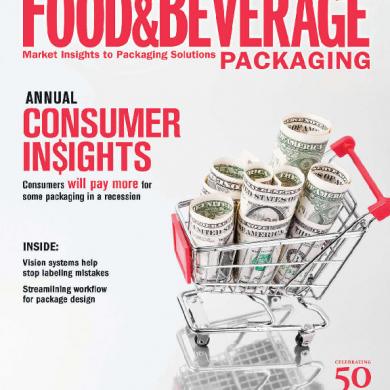Facilitating Learning( Food And Beverage Services )
This document was uploaded by user and they confirmed that they have the permission to share it. If you are author or own the copyright of this book, please report to us by using this DMCA report form. Report DMCA
Overview
Download & View Facilitating Learning( Food And Beverage Services ) as PDF for free.
More details
- Words: 447
- Pages: 23
Loading documents preview...
We dream of Filipinos, who passionately love their country and Whose values and competencies enable them to realize Their full potential and contribute Meaningfully to building the nation. As a learner-centered public institution, The Department of Education continuously improves itself And better serves its stakeholders.
To protect and promote the rights of every Filipino to quality, equitable, culture-based and complete basic education where: Students learn in a child friendly, gender sensitive, safe and motivating environment; Teachers facilitate learning and constantly nurture every learner; Administrators and staff, as stewards of the institution. Ensure an enabling and supportive environment for effective learning to happen; Family, community and other stakeholders are actively engaged and share responsibility for developing life-long learners.
Maka-Dios Makatao Makabansa Makakalikasan
Food Tech. Graduate FBS NC II Bread and Pastry NC II TM I
Is a training delivery approach that focuses on the competency development of the learner as a result of the training.
Role and Responsibility as a trainer
Team Member
Evaluator
Model
Motivator
Facilitator
Guide
Cooperative
Learner
Creative
Responsible
Decision Maker
Performer
Learning is competency –based modular in its structure.
The training is based on curriculum developed from the competency standards
Training is based on work that must be performed. Training materials are directly related to the competency standards and the curriculum. Training delivery is individualized and self-paced.
The system allows recognition of prior learning RPL
Training is based on and off the job components
The system allows for learner to enter and exit programs at different times and levels and to receive an award for competencies attained at any point.
Approved training programs are nationally accredited.
Assessment of learners is based in the collection of evidences of work performance based on industry or organizational required standards.
, and
• • • •
Participate in workplace communication Work in a team environment Practice career professionalism Practice occupational health and safety procedures
• • • • •
Develop and update industry knowledge Observe workplace hygiene procedures Perform computer operations Perform workplace and safety practices Provide effective customer service
• • • •
• •
Prepare the dining room/restaurant area for service Welcome guests and take food and beverage orders Promote food and beverage product Provide food and beverage services to guests Provide room service Receive and handle guest concerns
Achievement Chart Food and Beverage Services NC II
Food and Beverage Services NC II
Training Activity Prayer Recap of Activities Unfreezing Activities
Trainees
Facilities/Tools and Equipments
Venue (Workstation/Area)
Date & Time
Evaluation System Institutional Assessment - written, interview and demonstration – read the CBLM and other learning materials used in the module National Assessment- competent or not yet competent
To protect and promote the rights of every Filipino to quality, equitable, culture-based and complete basic education where: Students learn in a child friendly, gender sensitive, safe and motivating environment; Teachers facilitate learning and constantly nurture every learner; Administrators and staff, as stewards of the institution. Ensure an enabling and supportive environment for effective learning to happen; Family, community and other stakeholders are actively engaged and share responsibility for developing life-long learners.
Maka-Dios Makatao Makabansa Makakalikasan
Food Tech. Graduate FBS NC II Bread and Pastry NC II TM I
Is a training delivery approach that focuses on the competency development of the learner as a result of the training.
Role and Responsibility as a trainer
Team Member
Evaluator
Model
Motivator
Facilitator
Guide
Cooperative
Learner
Creative
Responsible
Decision Maker
Performer
Learning is competency –based modular in its structure.
The training is based on curriculum developed from the competency standards
Training is based on work that must be performed. Training materials are directly related to the competency standards and the curriculum. Training delivery is individualized and self-paced.
The system allows recognition of prior learning RPL
Training is based on and off the job components
The system allows for learner to enter and exit programs at different times and levels and to receive an award for competencies attained at any point.
Approved training programs are nationally accredited.
Assessment of learners is based in the collection of evidences of work performance based on industry or organizational required standards.
, and
• • • •
Participate in workplace communication Work in a team environment Practice career professionalism Practice occupational health and safety procedures
• • • • •
Develop and update industry knowledge Observe workplace hygiene procedures Perform computer operations Perform workplace and safety practices Provide effective customer service
• • • •
• •
Prepare the dining room/restaurant area for service Welcome guests and take food and beverage orders Promote food and beverage product Provide food and beverage services to guests Provide room service Receive and handle guest concerns
Achievement Chart Food and Beverage Services NC II
Food and Beverage Services NC II
Training Activity Prayer Recap of Activities Unfreezing Activities
Trainees
Facilities/Tools and Equipments
Venue (Workstation/Area)
Date & Time
Evaluation System Institutional Assessment - written, interview and demonstration – read the CBLM and other learning materials used in the module National Assessment- competent or not yet competent
Related Documents

Facilitating Learning( Food And Beverage Services )
February 2021 0
Induction Manual Food And Beverage
January 2021 1
Cblm- Food And Beverage Services Nc Ii 2015
February 2021 0
Food And Beverage Packaging Trends 2014
January 2021 1
Emerging Trend In Food And Beverage Packaging
January 2021 1
Food And Beverage Packaging - 08 Aug 2009
January 2021 1More Documents from "jumanlee"
